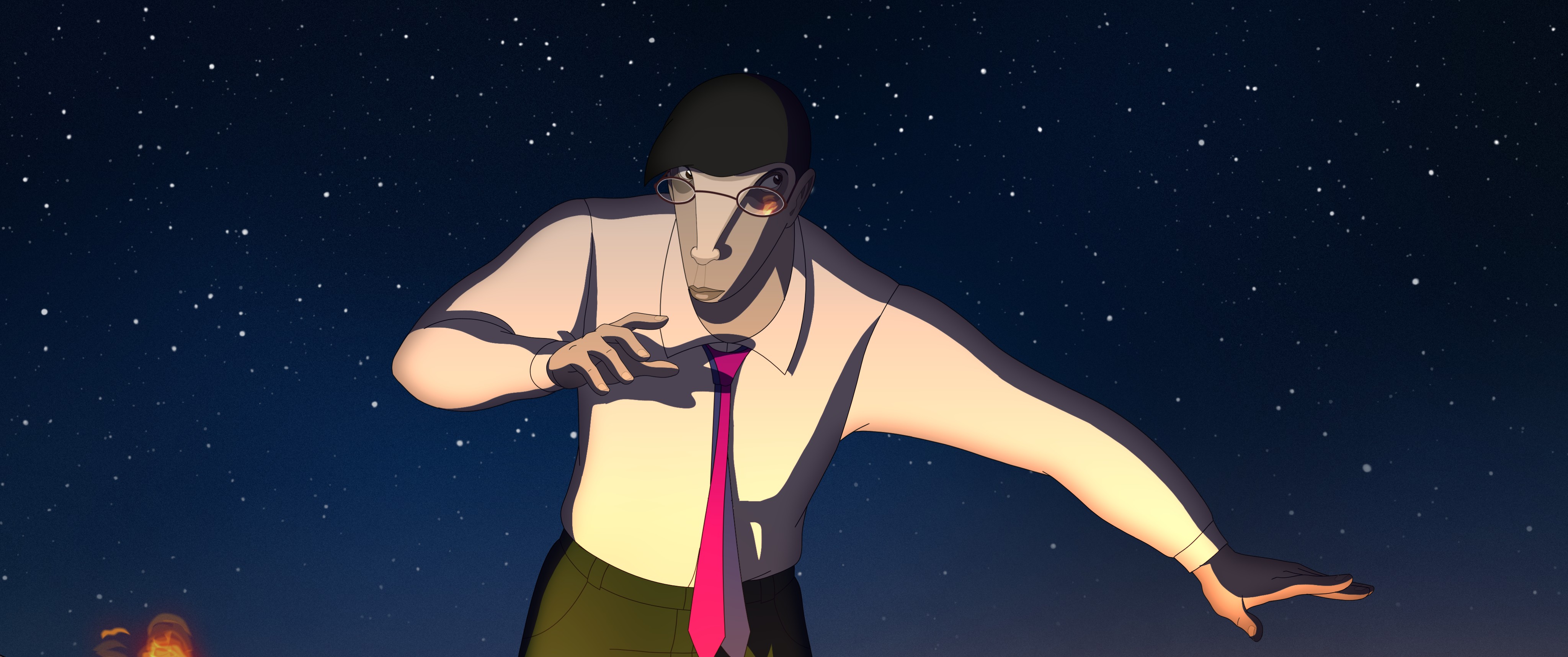An Entertaining Journey Through Arts, Action, Humour and Genres
After the fall of the communist regime, not only did financial support collapse, but the Hungarian animation industry was rearranged as well. In the last 30 years, few Hungarian animated features have been made, and a large part of them has been far behind in quality of the masterpieces of the previous period.
The first animated feature to be fully supported by the HNFF is Ruben Brandt, Collector, which premiered last year. If we look forward, only two animated features are in production, and both are supported by the HNFF’s Incubator Program: the utopian sci-fi in French co-production, White Plastic Sky, by Tibor Bánóczki and Sarolta Szabó, and a surreal animated adventure, Where did I go Wrong?, by Márton Szirmai.

Ruben Brandt, Collector
Ruben Brandt, Collector was written, directed and designed by Milorad Krstić, a Slovenia-born artist who has been living in Hungary for nearly 30 years. The film’s crew teamed up with almost 100 Hungarians, and the English sync was recorded with the voices of Hungarian actors as well – as the director puts it, “to be more international”. The film was produced by Péter Miskolczi, Radmila Roczkov, Hermina Roczkov and János Kurdy-Fehér, the music was composed by Tibor Cári, and the main voice actors were Iván Kamarás, Gabriella Hámori and Zalán Makranczi. Ruben Brandt is the first feature animation by Krstić; until now his biggest success was his short film My Baby Left Me, which in 1995 won the Silver Bear at the Berlinale and the Award for the Best First Film at the Annecy International Film Festival.
As Krstić said in an interview for Cartoon Brew about Ruben Brandt, it was made “as an audiovisual symphony”. On Indiewire, he explains the multi-layered story he intended to make: “I tried to make the first layer a crime story for the everyday person to follow, and then there’s the more complicated psychological aspects, choreographed like a dance with varying rhythms and movements. […] Sometimes I followed the painting, and other times I followed the story that’s identified with the painting. […] And some things I did were homages to directors”, like Sergei Eisenstein, Akira Kurosawa, David Lynch or Alfred Hitchcock. The film therefore mixes the elements of genres like thriller, noir, action-adventure film, heist film and even horror, with which Krstić clearly targeted the young adult/ adult audiences with his visual feast.
The film tells the story about Ruben Brandt, a famous psychotherapist who is forced to steal 13 paintings from world-renowned museums and private collections to prevent his suffering from terrible nightmares. Accompanied by four of his patients, including the femme fatale Mimi, he and his gang of thieves strike regularly and with great success: Louvre, Tate, Uffizi, Hermitage, MoMA. ‘The Collector’ quickly becomes the most wanted criminal. Gangsters and headhunters chase him around the world while the reward for his capture keeps rising, approaching 100 million dollars. A carter of insurance companies entrusts Mike Kowalski, a private detective and leading art theft expert, to solve the case.
Ruben Brandt was premiered last year at the Locarno Festival’s open-air venue, the Piazza Grande with its 8000 seats. It was the first time for a Hungarian movie. The international critics praised Krstić’s film after the first screening. The Hollywood Reporter says that Ruben Brandt, Collector “is first and foremost a rollicking and very imaginatively staged ride that’s enjoyable and different.” Variety writes that “the multi-hyphenate Milorad Krstić literally puts the ‘art’ in ‘arthouse’, using 2D and 3D animation techniques to depict the tropes of film noir and action-adventure, all the while paying clever homage to the worlds of film and fine art.” Deadline praises Ruben Brandt like it “is almost indescribable in its level of ambition and imagination, an impassioned pastiche of genre elements that pays homage to the hundreds of artists that have consumed the helmer throughout his life.” Ruben Brandt was awarded three times at the Seville European Film Festival, including the Best First Film award by the CICAE Jury, who chose Krstić’s film because it “is not only a wonderful, surprising work, it is also a real triumph of the senses. This is an animation with an original, unique aesthetic and a conceptual philosophy that will leave its mark, one that from now on cannot be disregarded for an intelligent, pure, genuine entertainment.”

Ruben Brandt, Collector
During the international screenings, Sony Pictures Classics, which had distributed László Nemes’ Academy Award-winning Son of Saul as well as his second feature Sunset in America, acquired all rights to Ruben Brandt, Collector in North America and in Latin America. SPC had the rights to distribute animations like The Triplets of Belleville by Sylvain Chomet, Paprika by Satoshi Kon, Persepolis by Marjane Satrapi and Vincent Paronnaud, Waltz with Bashir by Ari Folman and The Red Turtle by Michaël Dudok de Wit. Four of these films were nominated for the Academy Awards. Ruben Brandt, Collector was among the 25 full-length animations that were submitted to the Oscars, and Indiewire and Cartoon Brew wrote that it was very lucky to be among the five nominees. In addition, Krstić’s film was nominated for Best Independent Animation at the Annie Awards among films like This Magnificent Cake!, MFKZ, Mirai, and Tito and the Birds. Ruben Brandt, Collector will be released in American cinemas in the middle of February.
Ruben Brandt, Collector definitely became a decisive film in (contemporary) Hungarian animation, but so did it in the independent animation field, with its artistic and entertaining nature. Thanks to its significant professional recognition, we hope that it will encourage more and more experimental animated features to be supported by the Hungarian National Film Fund.
Zsófi Herczeg
